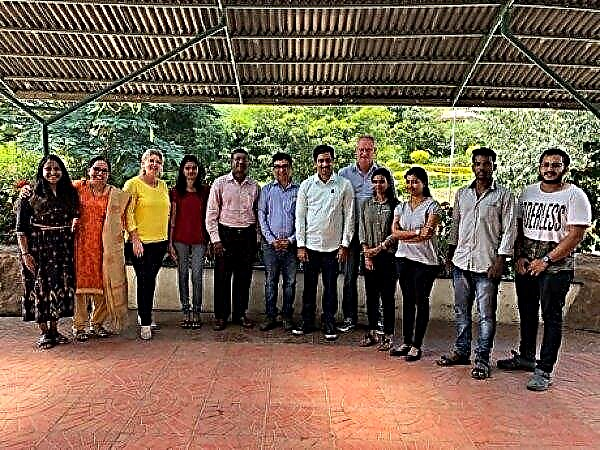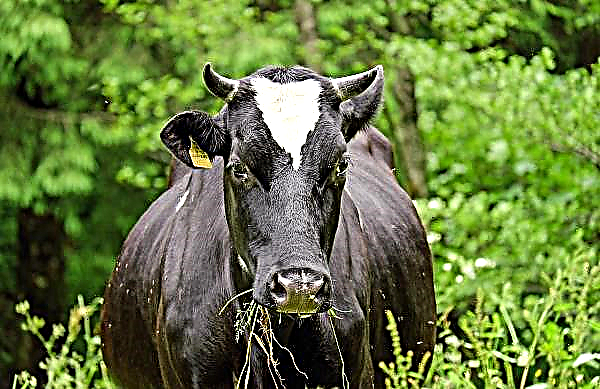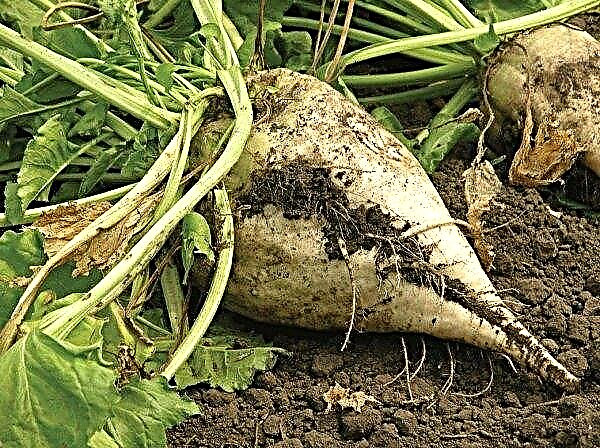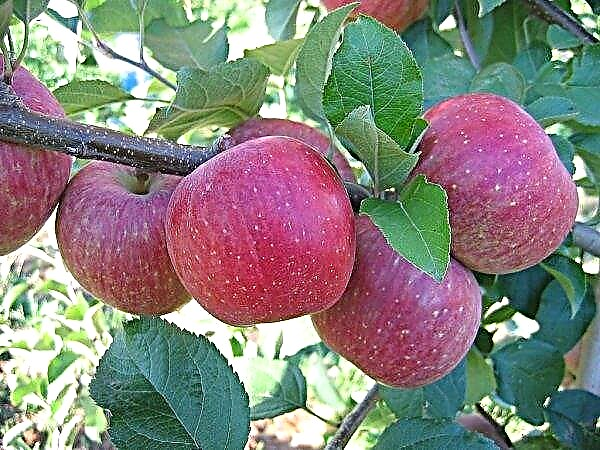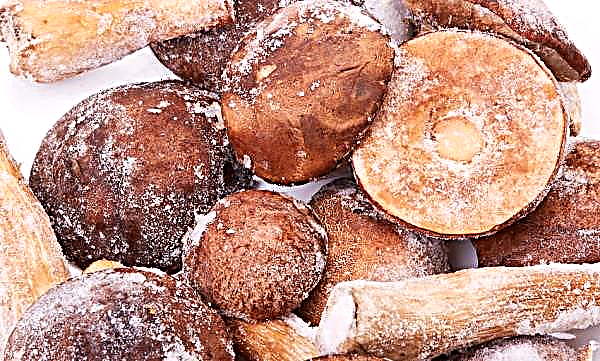If you grow tomatoes in a greenhouse, you should be aware of a problem such as fat loss. In this case, the tomato bushes look healthy, powerful, the green mass is large, but there are few or no flowers at all. Harvest in this case, you can not wait. We offer to understand the causes of this phenomenon and find out how to avoid this trouble.
How to understand that tomatoes "eat"?
To determine if there is a problem, review the symptoms of fatliquoring of tomatoes:
- the main symptom is that the bush is well developed, the stem is thick, the tomato leaf is dark green, juicy and curls at the tops;
- weak flower brushes, a small number of flowers, the fruits are not tied.
- the formation of a large number of stepsons.
If you find bushes in the greenhouse with such signs - it's time to act.
Did you know? On the coastal plain near the city of Almeria in the southeast of Spain there is a greenhouse city. Greenhouses occupied an area of 26,000 hectares, where half of the vegetable market in Europe is grown.
Why do tomatoes “fatten” in a greenhouse, and what to do about it?
First you need to find out the reason why the tomatoes are “overweight”, then it will become clear how to deal with this effectively and quickly. Consider common ones.
Microclimate
To grow tomatoes in greenhouse conditions, it is necessary to create the right climatic conditions. In the daytime in greenhouses there should be no more than 25 degrees of heat, and at night - no more than 22. In conditions of high humidity and high ambient temperature shoots quickly develop. And this means that all the power of the plant is sent to the green.
This situation can be corrected in a simple way, such as frequent ventilation of the greenhouse. This will get rid of unnecessary moisture and lower the temperature of the air and soil.
Incorrect fertilizer and watering
Gardeners often think how to feed tomatoes so that they develop better. In this process, control is necessary because an excess of fertilizers leads to fatliquoring of the bushes.
Important! Be careful with nitrogen-containing fertilizers, since it is nitrogen that stimulates the growth of green mass. They are not needed in the spring and during the period of intensive development of dressing with herbal infusions, fresh manure or bird droppings.
There is no need to abandon nitrogen altogether, just bring it within reasonable limits and simultaneously with phosphorus and potassium.
If you didn’t take something into account and the tomatoes are “fattening,” use a solution of potassium monophosphate (a tablespoon of 10 liters of water) to spray greens and root watering. The result also gives a solution of superphosphate (3 tbsp.spoons of fertilizer per 10 liters of warm water), is applied under the root in a volume of 1 liter.
Fat loss can arise from excessive watering. Tomato does not need excess moisture. Water it 1-2 times a week depending on weather conditions. Some gardeners water plants only when the bushes show the first signs of lack of moisture - they wither.
Landing density
The next reason that tomatoes "eat" is the increased planting density of seedlings. Over time, the bushes increase in size, and impassable thickets are obtained, from which the plants lack light.
In this case, radical measures need to be taken - to remove part of the leaves that interfere with the penetration of light, especially over flower brushes. This procedure requires accuracy.
Lighting level
In addition to all of the above, tomatoes are sensitive to lighting. For a good harvest, you need a lot of sunlight (up to 16 hours a day), and if it is not enough in the greenhouse, then with an improperly selected microclimate, plants will also begin to “fatten”.
Therefore, think about providing lighting during the construction phase of the greenhouse and do not allow it to darken. For example, do not plant large plants near the greenhouse, paint the opaque wall in white, and in difficult cases, use artificial lighting.
Did you know? Every year, over 60 million tons of tomatoes are grown on the planet, an increase of 16 million more bananas. Apples take the third place - 36 million tons.
Preventive measures
It is no secret that the best remedy for problems when growing garden crops is their prevention. Next, we will tell you how to prevent the fatliquoring of tomato bushes in order to minimize the possibility of a similar problem and increase productivity.
Grade selection
First of all, select varieties responsibly, based on the following rules:
- do not use determinant varieties of tomatoes that are intended for open ground in the greenhouse, the crop will be poor;
- the best varieties for greenhouse conditions are hybrids specially bred for these purposes.
Bush formation
Pay attention to the correct formation of the bush. To do this, remove unnecessary side shoots (leaving 2-3 branches) and pinch the tops of the bush. This procedure will increase the number of ovaries on the bush and allow the plant to receive enough light.
Fertilizer application
A large amount of fertilizer can lead to growth of the bush, but not to increase the yield. Therefore, the rules for fertilizing tomatoes must be followed.
They are as follows:
- a minimum of nitrogen fertilizers in the spring after transplanting the seedlings into the greenhouse and in the summer (manure, grassy talkers), it is better to introduce nitrogen during the autumn digging of the earth;
- watch for a lack of magnesium, as yellowed leaves indicate, in this case magnesium sulfate is used in the form of an aqueous solution;
- produce potash top dressing when flowering on several brushes is present on the bush (by 5–6);
- apply a solution of superphosphate 2 weeks after planting, then during the formation of ovaries, a third time during fruiting.
Flowering stimulation
For the formation of flowers on the bushes, it is necessary to observe the watering regimen (1-2 times a week), to plant tomatoes in time, to prevent thickening of foliage. Also, in the conditions of the greenhouse, pollination is carried out by forced means, for which the bushes are shaken.
Creating comfortable conditions
To avoid the problem of fatliquoring of tomatoes in greenhouses, create good conditions for them, pay special attention to such moments:
- the correct scheme for planting bushes;
- regular but not frequent watering;
- temperature during the day no more than +25 ... + 26 ° С, at night - up to +22 ° С;
- good illumination and regular ventilation;
- timely tying of branches to supports;
- for tomatoes it is better to allocate a separate greenhouse, do not plant them together with cucumbers, because the care of the crops is different.
Important! Treat tomato bushes every 2 weeks with drugs from diseases and insect pests, but in a low concentration. This will help not only in the fight against fatliquoring, but also protect the bushes and crops from death.
Tomatoes in greenhouses, subject to all the rules, give a good harvest. Tomatoes are unpretentious plants. Therefore, provide them with minimal care, guided by our recommendations, and get delicious fruits. If nevertheless your plants began to “fatten”, now you know what to do with it. Have a good harvest!

